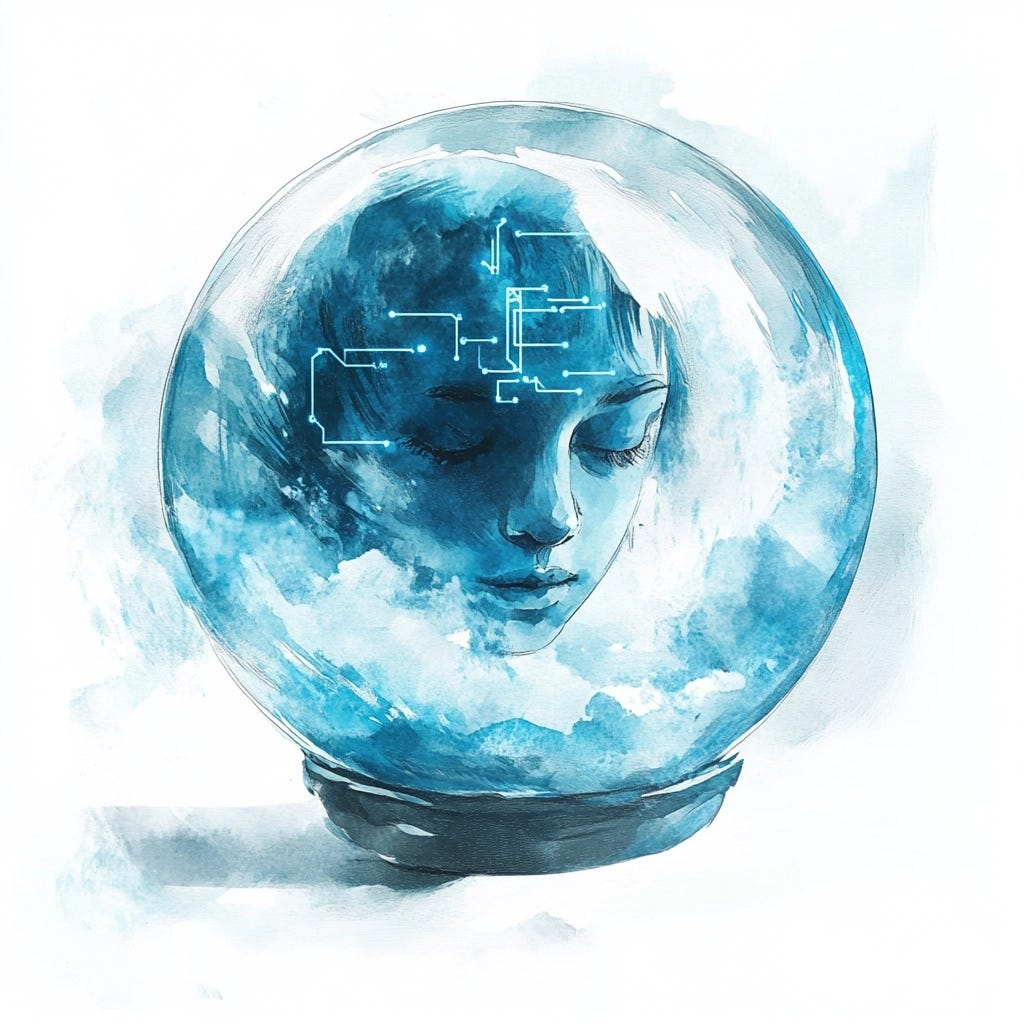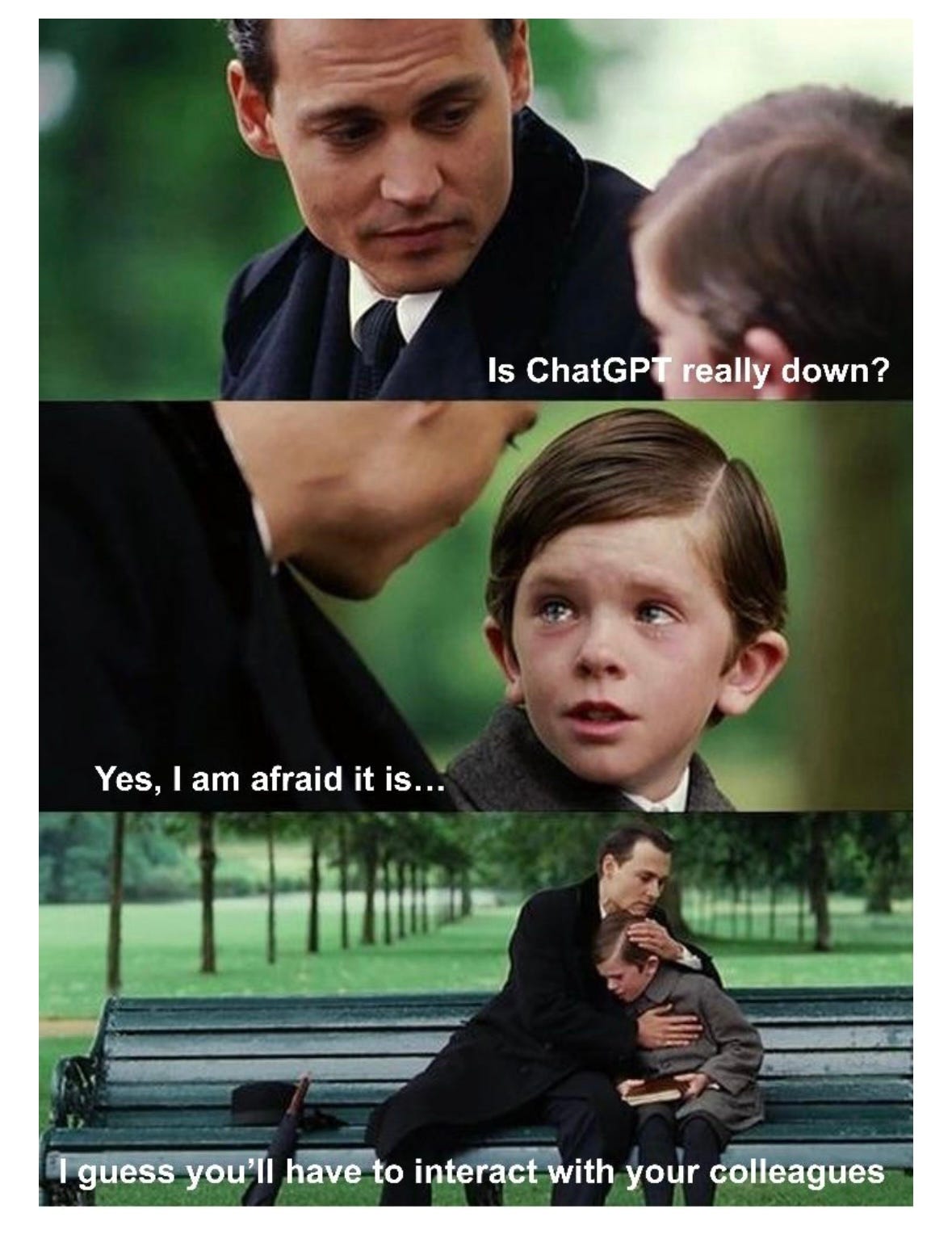With the widespread adoption of LLMs, a habit is emerging: entrusting them with our doubts and thoughts. Always available, these tools act as confidants or makeshift therapists, often filling the void left by human interactions.
Drawing from the vast knowledge distilled from the internet, they impress with their fluency. Their ability to wrap responses in calculated warmth can even, at first glance, surpass human exchanges. Ever relevant and accommodating, they flatter us with unsettling precision. Yet beneath this seamless interaction lies a lingering question: can virtual companions truly replace the depth of genuine human listening?
A real friend does more than respond or agree; they challenge, set boundaries, and confront us. This friction—sometimes uncomfortable—is what gives relationships their depth and authenticity. Human conversation isn't just a predictable exchange; it's a dynamic dialogue where unpredictability and contradiction open new perspectives.
ChatGPT & Co: As Precise as an Astrologer
One might think that fine-tuning is all it takes—that a generative AI could specialize, pause for effect, and mimic nuance. Yet at its core, it remains a machine—without emotion, without judgment. And still, we persist in attributing human traits to it. This is where the misunderstanding begins.
As Shalom Lappin aptly points out, our tendency to anthropomorphize LLMs is a natural bias that obscures an unavoidable truth: LLMs do not understand, they do not reason. They manipulate probabilities, producing responses that appear human without ever grasping their true meaning. We must recognize them for what they are—brilliant tools, but fundamentally limited.
ChatGPT & Co are not oracles. They are skilled generalists, adept at telling us what we want to hear while maintaining just enough ambiguity to appear universal. They also act as virtual mentalists, leveraging cognitive psychology frameworks and conversational patterns. By analyzing the information embedded in our queries, they adjust their language to align with both our explicit and implicit expectations.
Aristotle and Telos: Where Does AI Fit?
Aristotle believed that everything has an intrinsic telos—a purpose that defines its existence. Minerals remain inert, plants grow and reproduce, animals live and perpetuate, and humans seek knowledge and happiness. But where do digital tools fit in? Neither autonomous entities nor living beings, they seem to occupy a new and unprecedented category that challenges traditional frameworks.
An LLM is more than just a tool; it’s an all-in-one— a distilled reflection of our collective knowledge and culture, crystallized with unparalleled depth. But does it possess an intrinsic purpose? Unlikely. Its apparent function is to mirror our desires—but whose desires does it truly reflect? Ours, or those of its creators?
Perhaps LLMs do more than fulfill our expectations; they fill our voids, gradually dulling the essential drive that fuels human ambition—desire itself.
An Optimized Architecture
If AI can imitate humans to the point of creating an illusion of consciousness, it compels us to question our own nature. Are we unique creators, or merely the products of a vast and intricate process? This question leads to a dizzying hypothesis—what if we, too, are the result of a simulation?
Stephen Wolfram suggests that the universe itself might be a simple, optimized structure governed by networks of information from which complexity emerges.
This idea invites us to consider a bold analogy: DNA, with its remarkable ability to condense biological information, serves as the foundation of life. Could LLMs represent a digital counterpart? By structuring data into bytes, might they give rise to a new form of emergence—one unique to the digital age?
When the Tool Becomes the World
Since the rise of Web 2.0, we've been layering a digital dimension onto our reality—much like Borges’ map, where a perfect 1:1 map entirely covers the territory it represents. With AI, we have done something similar. By ingesting data at a 1:1 scale, we've created a digital map overlaying our physical world. But what if this map, through unexpected emergence, ceases to be just a copy and becomes a world of its own?
This new reality could not only blur our sense of the real but propel us into a parallel dimension—a simulation that imposes itself from the outside. And yet, shaped by our cognitive conditioning, our brains might adapt to this new landscape, convincing us that it originates from within. It would no longer be a projection, but an imposition—an artificial world gradually absorbing the old one.
Perhaps humanity, the product of an intelligence long past, is the most enduring expression of life. Are the AI systems we create today mere echoes of that origin, or are they part of an ongoing pursuit of perfection?
Many questions, few certainties. But one thing remains clear: the next time you confide in an LLM, remember—these AI systems are neither positive nor negative, and certainly never neutral. It’s up to you to decide what you choose to project onto them.
MD & AM
Alexandre Modesto bridges two seemingly distant worlds—the majestic peaks of the French Alps and the boundless digital landscape. A modern explorer, he creates connections between the raw beauty of nature and the infinite possibilities of the web. In his newsletter, The Universe is Not the Limit (French), he shares thought-provoking insights that challenge conventional perspectives. His projects, blending digital creation and terrestrial exploration, reflect a unique approach that pushes the boundaries of how we perceive the world.






Tedos is part of our Being where intimacy is only a part of
Oh my goodness ! This one has really got my attention. Thank you Marie for sharing this. I don’t know whether I’m intrigued or scared out of my mind 🤯.